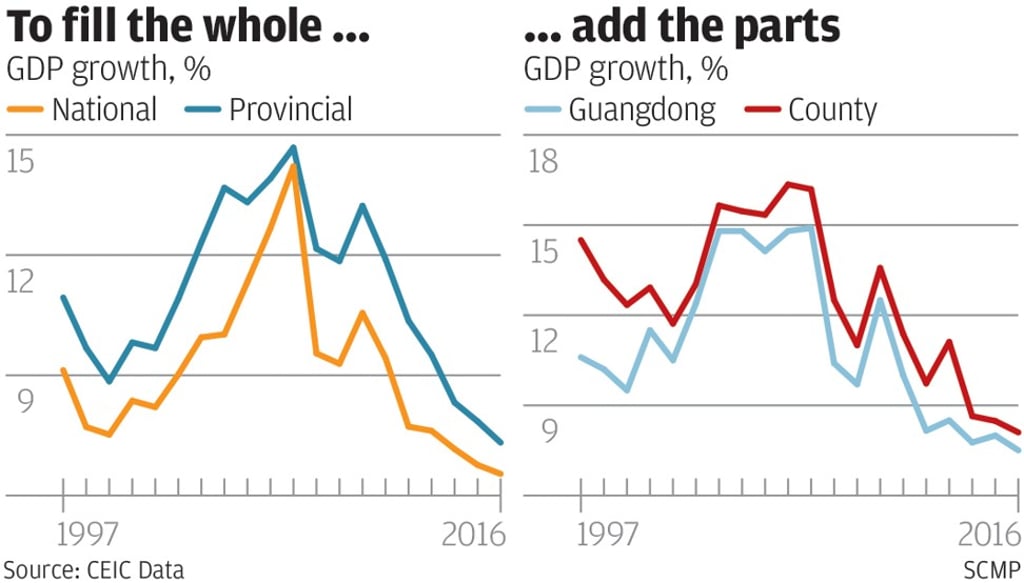Jake's View | Arithmetic with Chinese characteristics, where the sum of the parts is greater than the whole

The Binhai New Area in the northern city of Tianjin – an economic zone that sparked talk of grand ambitions to create China’s answer to Manhattan from a riverside swamp – raised eyebrows this month when it announced that its GDP growth in 2016 was a third smaller than it previously stated.
-- SCMP, January 17
China is a land where the sum of the parts is greater than the whole. Binhai is not alone in puffing up its figures. Every province does it, I think, and every county.
For instance, the record shows a national gross domestic product (GDP) in 2016 of 74.3 trillion yuan (US$11.6 trillion). Add up the GDP figures for each of the provinces, however, and you get 78 trillion yuan.
The phenomenon also shows up in the published growth rates. As the first chart shows, the weighted real growth rate (2014 nominal GDP weights for those of you technically minded) of the provinces combined is consistently and significantly higher than the national figure.

But three provinces were under the mark in 2016 and one governor surely tempted fate. Liaoning province reported a negative growth rate of 2.5 per cent. The last year any province dared report negative figures was 1991 when Anhui did it.
